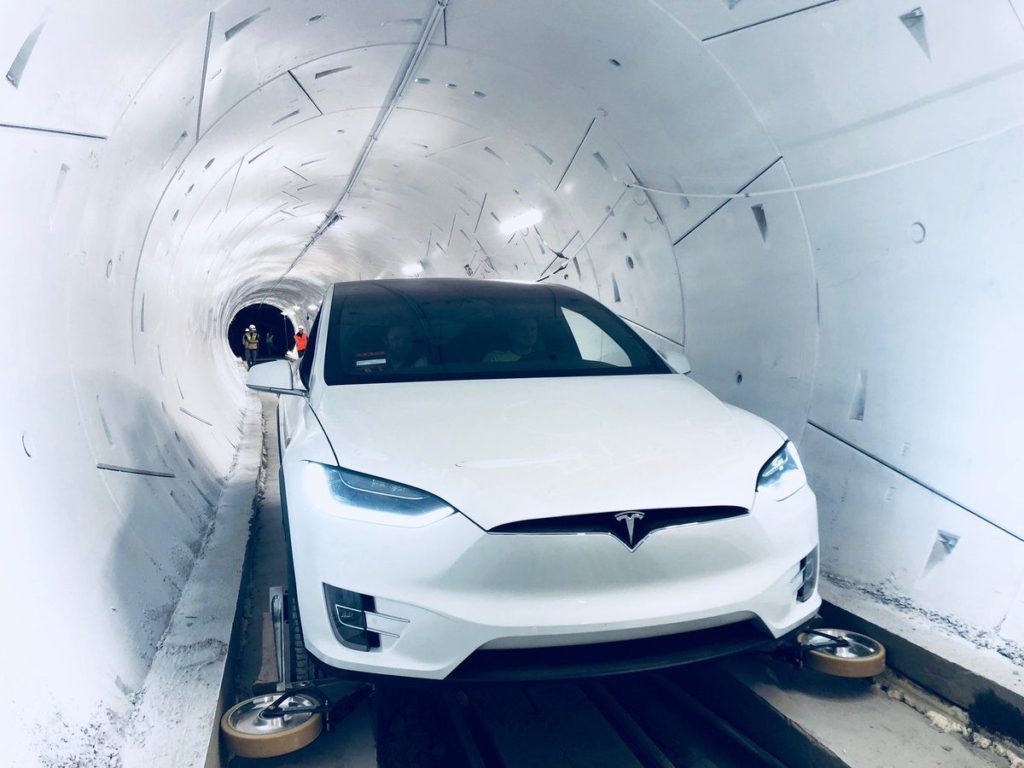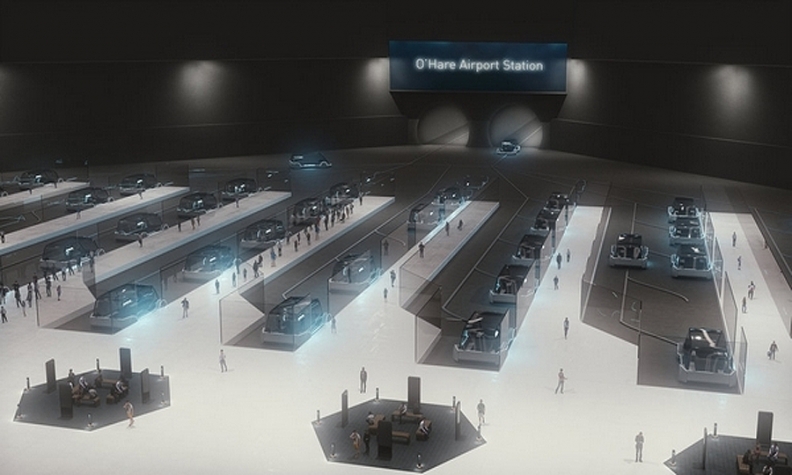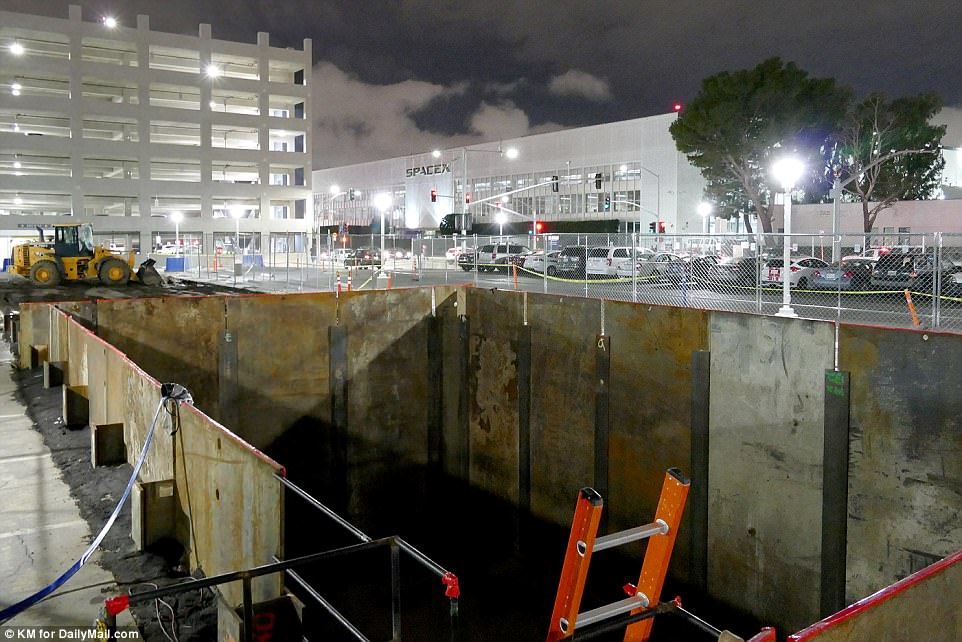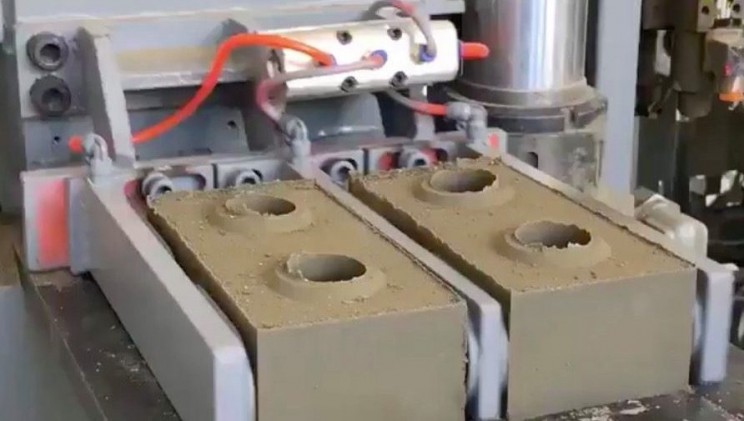Deputy Mayor of the City of Chicago, Mr. Robert Rivkin, recently flew to Los Angeles to witness The Boring Company’s new Hawthorne test tunnel in action. The Tuesday evening event was focused on a modified Model X with training wheels, or “tracking wheels”, as Tesla calls them, running down the 1-mile tunnel. But the impact for Musk’s tunnel company was very positive despite a currently bumpy ride at no more than 50 mph.

Eventually, the ride will be “as smooth as glass”, in Musk’s own words, but apparently Mr. Rivkin saw enough to stick with the contract negotiations in preparation for his presentation to the Chicago City Council during the first quarter of 2019.
According to Mr. Rivkin:
“It was bumpy at 50, mainly because they recently completed the test track, and they didn’t have a chance to finish smoothing the concrete. It’s not a technical challenge to smooth out concrete on the tunnel floor.
“This is not an issue of new technology. Digging a tunnel and running an electric vehicle through it isn’t new. Can it be done at cost at that can be covered by (passenger fares)?
“No public transit system I’m aware of covers its costs on fares. (Musk) is the rare entrepreneur willing to bet it can. He’s willing to build this completely at his own cost. If he fails, he fails.”
Mr. Rivkin is clearly an optimist, but who wouldn’t be in the company of Elon Musk? The key issue here is not how the transportation itself will work. The original plan for the tunnel between downtown Chicago and O’Hare International Airport was for electric pods to operate between the two locations, traveling at 150 mph at a fare cost of not more than $25. The real question is how Musk plans to achieve a cost that will be covered by fares rather than eat up more capital over time.

We’ve got lots of clues as to how that cost can be achieved. Right now, even without the optimization and cost-cutting ideas being implemented, it only cost the Boring Co. about $10 million to build a 1.14 mile stretch of tunnel and have it operational. Compare that to $1 billion per mile of traditional tunneling technologies and it looks like Musk’s company won’t have to stretch too much to achieve optimal costs.

This hole in the ground could actually serve its intended objective: to address the ongoing problem of urban traffic that plagues all the world’s major cities. Electric pods shooting through tunnels at breakneck speeds might sound a little futuristic, but to be fair, the future is already here with respect to electric cars. And all credit goes to Musk and Tesla Inc.
If the City of Chicago does move forward with the plan, it will be a massive validation of the work done by the Boring Company. By then, costs will have come down even further, thereby cementing its feasibility as a viable means of mass transit underneath the world’s bustling metros.

As a bonus, the dirt from such tunnels will be pressure-packed into construction bricks for free housing and other purposes. That’s the plan, and the more they dig the more Boring Bricks they can sell at the projected price of 10 cents. It will help offset drilling costs, not to mention making the tunnel a socially responsible structure because a portion of bricks will go towards affordable housing.

If you’re still not convinced that this is workable, just consider the fact that all the “science” around us today was once the stuff of legends, fictional lore, folk stories and fairy tales.
Robots, for example were conceived in Greek mythology as creations of Hephaestus, the Greek god of blacksmiths, sculptors and artisans. Today, we have humanoid robots that can converse intelligently (almost) with humans. Man dreamed hopelessly for centuries about soaring through the sky, but today we don’t think twice about being in the belly of a massive steel bird hurtling miles over the clouds at astounding speeds.
Don’t think in months or years. Think in centuries and millennia. The impossible may not become possible overnight, but give it a few centuries or a couple of millennia and it just might.
As with many conventional technologies that have had their time in the sun, a disruption is due in the age-old transportation space. A HUGE disruption. We need innovative thinking with bold action. We need more Musks and more Boring Companys, not to mention more Teslas on the road.
Mr. Rivkin left an unspoken truth hanging in the air about Musk. “If he fails, he fails,” he said. Ah, but if he succeeds, the world will see that what was once a simple hole in the ground was the seed of a revolutionary and disruptive new concept.


